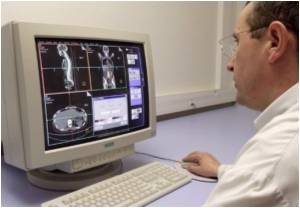Interleukin-10 (IL-10),a small, naturally occurring protein, plays a crucial role in removing bacteria and reversing damage done to the brain, scientists claim.

"The ineffectiveness of antibiotics in treating newborns with meningitis and the emergence of antibiotic-resistant strains of bacteria require new strategies," explains Nemani V. Prasadarao, Ph. D, associate professor of infectious disease at Childrens Hospital Los Angeles (CHLA).
One of a class of proteins known as cytokines, IL-10 is involved in immune function.
Rahul Mittal, lead author on the paper and a post-doctoral fellow in Prasadarao's lab, said: "We found that during an episode of bacteremia, when a large number of bacteria are circulating in normally sterile blood, IL-10 acts to clear antibiotic-sensitive as well as antibiotic-resistant E. coli from the circulation of infected mice."
They also determined that E. coli infection produced damage to the mouse brain comparable to that seen in humans. Three-dimensional imaging studies of infected animal and human infant brains showed similar gross morphological changes.
"When we gave IL-10 to mice 48 hours after infection, those changes to the brain were reversed," said Mittal.
Advertisement
The team also discovered a mechanism of action for IL-10 protection. In culture, using mouse and human white blood cells called neutrophils, they found that exposing these cells to IL-10 produced an increase in the number of a certain type of receptor on the surface of the neutrophils. An increase in the CR 3 receptor led to enhanced killing of bacteria.
Advertisement
To confirm that the CR 3 receptor is critical to the protective effect of IL-10 against E. coli, CR 3 expression was suppressed in a group of mice. Before exposing the animals to bacteria, white blood cells were examined and the CR 3 receptor was determined to be absent. These animals were exposed to E. coli and then treated with IL-10.
The mice were found subsequently to have bacteria in the CSF and morphological changes indicating brain damage. The protective effect of IL-10 during bacteremia was absent in animals without CR 3 receptors. The researchers further concluded that the crucial increase in CR 3 receptor was a result of IL-10 suppressing an important inflammatory agent, prostaglandin E-2.
"Since diagnosing meningitis is difficult until bacteria reach the central nervous system, finding an agent that can clear the bacteria while also preventing or restoring the damaged brain is very exciting," said Mittal.
The study, conducted in collaboration with the Keck School of Medicine of the University of Southern California and the Universite Auvergne, France, has been published in the Journal of Experimental Medicine.
Source-ANI















